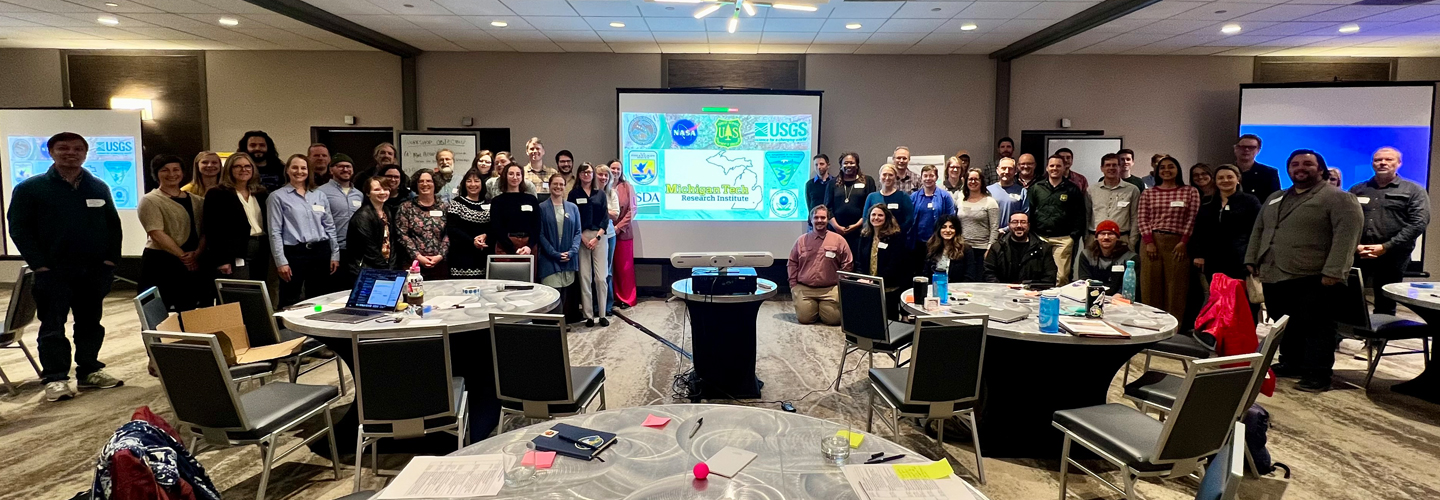
27 min read
Introduction
The Applied Earth Observations Innovation Partnership (AEOIP) was established in 2018 to facilitate knowledge coproduction and optimization of NASA Earth observations that can be used by natural resource managers for decision making. Through continued iteration and reflection, coproduction brings together stakeholders to share responsibilities and the completion of activities towards a common goal. AEOIP enables strong collaborations between NASA and the U.S. Forest Service (USFS), along with growing participation from U.S. Geological Survey (USGS), Bureau of Land Management (BLM), and other federal land management agencies.
AEOIP has held several previous meetings: the first was a Joint Applications Workshop on Satellite Data for Natural Resource Management held April 29-May 2, 2019, reported in an Earth Observer article, "Summary of the USFS-NASA Joint Applications Workshop on Satellite Data for Natural Resource Management." The group met again virtually in 2020 during PitchFest. In 2022, a virtual workshop on Integrating Remote Sensing Data for Land Management Decision-Making took place March 23-24, 2022. In 2023, the AEOIP workshop took place April 25-27, 2023, with a hybrid format - the in-person participants met at the USFS Geospatial Technology and Applications Center (GTAC) in Salt Lake City, UT. The 2023 workshop focused on Addressing Land & Water Monitoring Needs Using Remote Sensing Data.
These workshops have been designed to build connections between participants across the research-to-applications spectrum with subject matter experts from a variety of federal agencies and other affiliations to continue to promote interagency collaboration within the Earth Observations (EO) applications field. This goal is accomplished using interactive panels and guided discussion sessions that highlight new tools and techniques, promote NASA EO data product uptake, and foster connections between data providers and data users.
2024 Workshop Overview
The most recent AEOIP workshop took place April 23-25, 2024, with a hybrid format. The in-person participants met in Ann Arbor, MI. The three-day event had a similar structure to its predecessors but with a wildland fire management theme. Altogether, 135 people participated in the workshop, with 77 attending in person and 58 virtually - see Photo 1.

Meeting Objectives
The workshop objectives were to:
- meet AEOIP's mission by providing a forum for building new relationships among Earth observations data providers, users, and stakeholders;
- gather and/or codevelop "shovel-ready" ideas to better leverage Earth observations to meet science and management priorities of U.S. land and natural resource management agencies;
- gather needs for and/or develop educational materials to support the use of existing EO training resources for fire management; and
- gather ideas for the 2025 workshop and other AEOIP activities.
Breakout Sessions
A large segment of this workshop was dedicated to four concurrent topical breakout sessions - referred to in this report as Breakout Sessions A-D. The topics covered in each breakout session are listed below, along with the name(s) of those who facilitated discussion.
- Breakout Session A: Fuels, Wildland Fire Emissions, Carbon & Climate - Andy Hudak [USFS] and Edil Sepulveda Carlo [NASA's Goddard Space Flight Center (GSFC)/Science Systems and Applications Inc. (SSAI)];
- Breakout Session B: Prescribed Fire Planning & Management - Nancy French [Michigan Tech Research Institute (MTRI)], Birgit Peterson [USGS], and Jessica Meisel [University of Idaho];
- Breakout Session C: Fractional Vegetation Cover Products & Decision Making - Tim Assal and Jake Slyder [both U.S. Department of Interior, BLM], and Liz Hoy and Amanda Armstrong [both at GSFC]; and Alexis O'Callahan [University of Arkansas].
- Breakout Session D: Post-fire Effects & Recovery: Assess, Predict, Remediate, and Monitor - Mary Ellen Miller [MTRI].
All of the breakout groups met on each day of the meeting. On the morning of the first day, the facilitators of each group gave brief "elevator pitches" about each breakout topic, and participants selected a topic for focus. After that, a block of time each day was dedicated to breakout activities and discussions. Participants were asked to focus on different aspects of the topic each day. In the afternoon of the first day, each group focused on identifying needs and challenges in the area being discussed - with a brief report-out at the end of the day. On the afternoon of the second day, the focus was on data availability and solutions - i.e., finding ways to overcome obstacles to making data more readily available to users - again with a brief report- out at the end of the day. On the morning of the third day, there were topical presentations. Each group worked to synthesize their three days of discussions and chose a representative to give a summary report during the closing plenary later that morning.
Workshop Summary






